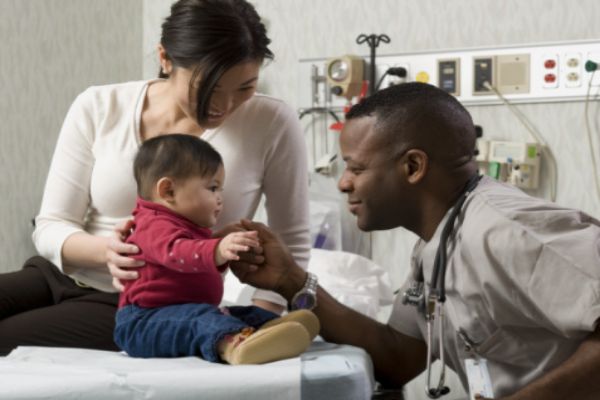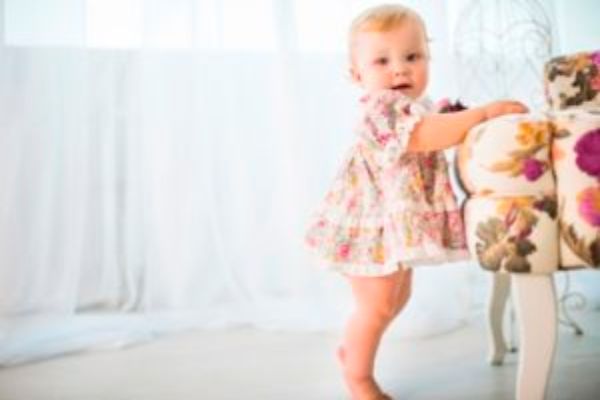What a Difference a Shoe Makes…

The Importance of an Appropriate Shoe for Children with a Wide Range of Pediatric Gait Presentations
Shoe Recommendations are among the most common requests I receive from parents as well as other therapists. The proper shoe can make a world of difference. This post is dedicated to three typical gait presentations as well as our recommendations for the best children’s shoes and advice as you venture out into the world of footwear!
Note: I am a proponent of children participating in Physical Therapy sessions without shoes, to allow for proprioceptive input, promote intrinsic muscle strengthening, address alignment and balance reactions. I advise the use of a good supportive shoe when navigating in community and outdoor environments to ensure that in between therapy sessions, children are provided with the stability and support they require, as they develop the control on their own.
Below is an image of one of my clients, with and without proper supportive shoes.
what a difference a shoe makes
In the before image: note the lack of medial arch, the calcaneal tilt and the line from the lateral to medial malleoli at a sharp angle, offering the child an unstable and poorly aligned base of support.
In the after image: note the medial arch promotion, the malleoli at a parallel line and the heel aligned vertically, providing the child with an aligned and more stable base of support.
The Best Children’s Shoes Can Provide:
Support
Stability
Control
Facilitate Weight Bearing
Promote Lower Extremity Alignment
Encourage Fluidity and Efficiency in Motor Patterns
Common Pediatric Presentations which require specific footwear recommendations include:
1) Flat Feet (aka Low or No Medial Arch)what a difference a shoe makes
Children who present with flat feet may have been late ambulators, may have been initially classified as toe walkers, or may have been diagnosed with hypotonia. When the child is standing, you will notice the entire foot contacting the weight bearing surface with the absence of a inner (medial) arch. The foot may also turn out, increasing the weight on the medial side, and making it appear even more flat. When assessing this child’s gait, you may notice audible “foot slap”, denoting a lack of true control as compared to more typical gait pattern (as weight shifts from heels to toes).
It is important to note that most children will appear with a flexible flat foot early on in their “walking career”. Intervention is not necessary if this presentation is not otherwise affecting function. Some Pediatricians and Orthotists will recommend an orthotic, sometimes just a medial insert to support the arch or even a Supramalleolar Orthosis (SMO), which controls the foot alignment at the level of the malleoli.
In my experience the proper footwear (along with appropriate Physical Therapy intervention in the form of exercises/activities to promote proper weight bearing, weight shifting, range of motion and strengthening) can prevent or eliminate the need for an orthotic.
Read more about Treatment Tips for Children with Flat Feet here!
2) Idiopathic Toe Walkingwhat a difference a shoe makes
Children who walk on their toes, but do not have an underlying neurologic or orthopedic condition causing this presentation, may have been late ambulators, locking their forefoot to provide the stability they required as they began walking. Children who toe walk may be sensory seekers, craving the extra input provided by the weight bearing force distributed over a smaller area. It is important to rule out an underlying condition which may cause toe walking.
Read more about Idiopathic Toe Walking here!
Occasionally if a child has been toe walking for a long period of time, they may have muscular tightness and range of motion limitations that require a comprehensive PT intervention with follow up at home. Many times these children are recommended an orthotic, sometimes even an ankle foot orthosis (AFO) which locks the ankle in place and severely limits the child’s natural development of their plantar intrinsic muscles (key component of arch support) and limits the crucial proprioceptive input that children rely on to develop balance reactions and promote neutral alignment.
3) In-Toeing
what a difference a shoe makeswhat a difference a shoe makeswhat a difference a shoe makes
Children who present with in-toeing, turn feet inward when they walk or run. This may cause child to stumble and lose balance more often.
In-toeing can be a result of:
Metatarsus Adductus: causing the child’s foot to curve inward from the middle of the foot towards toes.
Tibial Torsion: causing the child’s lower leg bone or tibia to rotate in.
Femoral Anteversion: causing the child’s thigh bone or femur to rotate in.
Each of the underlying causes of in-toeing may be different, but the effects on gait are similar in the sense that children walk with their toes turned inward and may experience frequent loss of balance, due to lack of foot clearance and difficulty maneuvering any terrain changes.
Children who present with in-toeing may require help controlling their lower extremity alignment and base of support. This will help address proper development of muscle strength, activation and inhibition of compensatory strategies that may cause future orthopedic concerns as well as potential muscle and joint pain.
The Best Children’s Shoes Offer:
Stability: a shoe that provides stable base of support, has a bit of weight to it, flexible but durable
Support: a shoe that provides control and support at key places – heel cup, medial arch and forefoot
Comfort: a shoe that allows the child to feel comfortable, made of a breathable material with enough shock absorption to cushion the ground reaction force
Some of the brand names/models which I have recommended to the families I work with include:
Stride Rite Ian
Stride Rite Artin
Stride Rite Cannan
New Balance KV790
New Balance KA680
Pediped Max
Pediped Dakota Mary Jane
Keen Oakridge
Keen Oakridge Low
Keen Newport Sandal
While this post reinforces the importance of proper footwear, the recommendations for Best Children’s Shoes made should be used in conjunction with Physical Therapy interventions to address the specific needs of each individual child.
Dinosaur Physical Therapy!
Πρόσφατα Άρθρα

Why Baby’s Sense of Smell is Important
What’s in a Scent?
They say the nose knows. That couldn’t be truer for your newborn. Their sense of smell is not just incredibly strong, but it helps them learn about people and places, ...

Early Detection + Early Intervention = A Life Full of Possibilities
Baby’s early years are some of the most important years for their development, which is why early detection and early intervention are so critical. In the first years of baby’s life, their brain ha...

Baby-Proofing: 14 Tips for Your Home
Baby-Proofing: 14 Tips for Your Home
Your little one is movin’ and cruisin’! So what’s next? Now the challenge is making sure your house is ready for your toddler’s new explorations. Fol...
